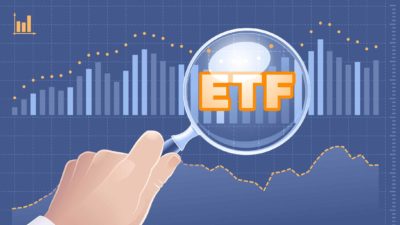ASX dividend shares don't generally garner the same media headlines as growth shares.
The reason is simple human nature.
If a company sees its share price rocket by 50% in a matter of months, the greed factor kicks in. By that I mean we all want to reap those kinds of stellar returns from our investments. And we tend to tune in to stories about huge share price growth to see how it was achieved.
On the other hand, an ASX dividend share that reliably returns a 5% annual yield to investors isn't nearly as exciting. Even if it does manage some capital growth along the way.
But as long-term investors that's okay. More than okay, in fact.
As a veteran buy-and-hold investor once told me, "If you want exciting, go to the casino."
Real interest rates are already negative
The Reserve Bank of Australia (RBA) is adamant that the official cash rate will remain at a rock bottom 0.10% until 2024.
That in turn is keeping the lid on any kind of returns you can get from your cash savings.
Even a 24-month term deposit is unlikely to pay more than 1% interest. Factor in inflation, and any cash you have in a deposit account will be worth less in 2 years than it is today.
That means investors looking for positive real (inflation-adjusted) income streams need to look elsewhere.
Which brings us back to ASX dividend shares.
Robert Francis is the Australian managing director of online trading and brokerage company eToro.
When asked why investors should include dividend shares in their equity portfolio, Francis told The Motley Fool:
Dividend-paying stocks provide a reliable income and are known for being safer, reliable investments, especially compared to growth stocks or other investments that don't pay dividends… As markets can be quite volatile, dividend-paying stocks allow investors to weather the storm, because the dividend provides returns regardless of a dip in the share price.
These stocks also have the potential to deliver substantial capital gains when held for a long period of time.
However, you can't (generally) get something for nothing.
When it comes to dividend payments, Francis said, "The major disadvantage of paying dividends is the cash paid out to investors cannot be used to grow the business."
Not all ASX dividend shares are created equal
Of course, that doesn't mean you should go out and buy just any old dividend paying shares.
As with any investment, it's important to do your research first. Look into the company's historic and current dividend yields and its share price performance over time atop your other due diligence.
If you find what you think is a decent income paying share, see how it stacks up to its competitors. As Francis explains, that's important because, "If a company's dividend yield is significantly higher or lower than that of similar companies, it could be a red flag."
Next, check out the payout ratio. According to Francis:
Investors should look at the stock's payout ratio, which tells them how much of the company's income is going toward dividends.
A payout ratio that is too high, generally above 80%, means the company is putting a large percentage of its income into paying dividends. In some cases, dividend payout ratios can top 100%, suggesting the company may be going into debt to pay out dividends.
Common investing mistakes
Francis told us there are a few common mistakes investors in ASX dividend shares should avoid.
Namely:
- Investing in a particular stock, based entirely on hype instead of doing their own research into the company.
- Expecting to buy and sell shares just for the dividend.
- Focusing purely on high yield, high-risk strategies. And,
- Focusing on current, instead of future yields.
We also wanted to get Francis' take on whether it's better to buy shares before or after they go ex-dividend. He said:
While a stock's dividend history plays into its popularity amongst investors, the announcement and payment cut-off dates also have an effect on its price.
The announcement date is important because a change in the expected dividend or distribution payment can cause the stock to quickly rise or fall, as investors respond to new expectations.
If you want in on the next dividend payments, you'll want to buy shares before the ex-dividend date. Just be aware that shares tend to fall in value by roughly the amount of the upcoming payment on the day they go ex-dividend.
Two leading ASX dividend shares
One of the chief advantages of ASX dividend shares over most other international exchanges is that many offer franking credits. In a nutshell that means that you can deduct the corporate income taxes the company has already paid (generally 30%) from your own tax burden.
Dividends may be unfranked, partly franked, or wholly franked.
With that out of the way, there are a number of quality ASX dividend shares for you to consider adding to your portfolio.
We'll look at 2 of those today.
First, Adairs Ltd (ASX: ADH).
The home furnishings retailer has more than 160 stores across Australia and New Zealand. And it has a lengthy track record of making both annual dividend payments, even in 2020 when many companies were forced to suspend payments.
At the current price of $4.18 per share, Adairs pays a dividend yield of 5.8%, 100% franked.
Adairs shareholders have also enjoyed some outsized capital growth. The Adairs share price is up 179% over the past 12 months. The ASX retailer has continued to perform well in 2021, with shares up 23% year-to-date.
The second ASX dividend share you may wish to add to your portfolio is Accent Group Ltd (ASX: AX1).
The sports and fashion retailer also has a long track record of paying out 2 annual dividends.
At the current price of $2.65 per share, Accent pays an annual dividend yield of 4.5%, fully franked. And like Adairs, Accent has also outperformed the market, with shares up 124% over the past 12 months. Year-to-date the Accent share price is up 12%.









